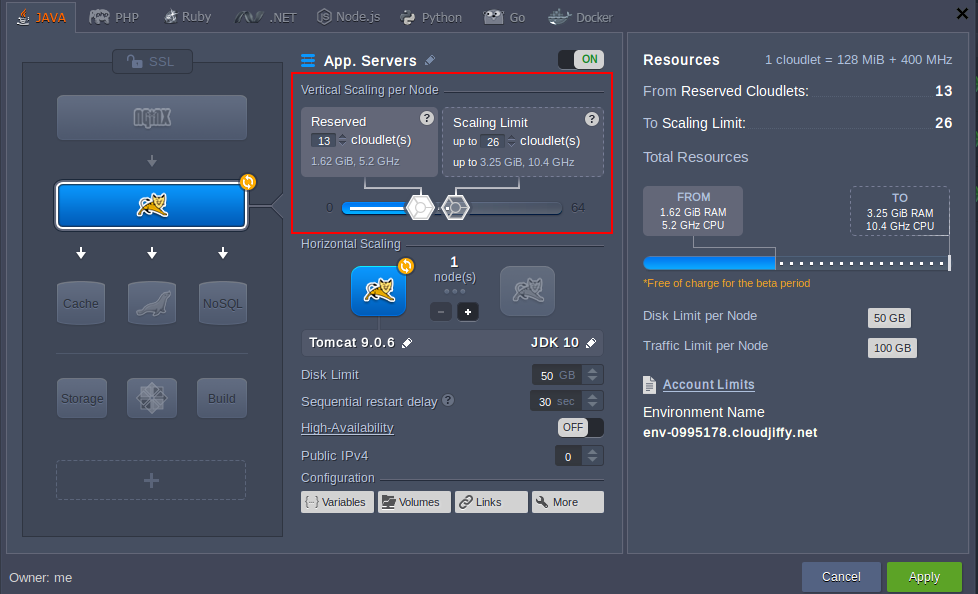CloudJiffy is the Cloud PaaS which can automatically scale any application, both vertically and horizontally, making hosting of your applications truly flexible.
You simply decide the maximum limit that you have ready to consume and CloudJiffy automatically defines the optimal amount of resources required for my app, tracking the incoming load in real time.
How It Works
So, the key idea of automatic scaling is fairly simple - as soon as an application’s load grows, CloudJiffy simply makes additional resources available to it; and when the load goes down again, the resources get reduced by the platform automatically.
Herewith, changing the amount of allocated resources typically takes only 1 or 2 seconds and does not have any negative impact on your app
There are two types of cloudlets available: Reserved and Dynamic.
- The Reserved ones are used to define the amount of resources you expect in your application will certainly consume and you pay for them irrespective of actual usage. However, they are charged with lower price compared with dynamic ones.
-
Dynamic cloudlets defines the amount of resources your application can access, based on necessity. You pay for them only in the case of real consumption.
Automatic vertical scaling is performed within the confines of the stated dynamic cloudlets number. You are able to choose your scalability limits with the appropriate settings and, in such a way, effectively put caps on the budget you are ready to spend, preventing unexpected or high bills.

- A newly created environment receives a certain amount of cloudlets. Resource consumption depends on the type and quantity of your software stacks. Upon being added added to the environment, each stack receives the default number of allocated cloudlets according to the optimal resource amount, required for its proper workability.
If you would like to change these values and scale your environment, the maximum number of available resources (cloudlets) can be increased/decreased manually through the Environment topology wizard. For that, use the cloudlet sliders in the Vertical Scaling section of its central pane.
All the changes are applied immediately after they are saved, without the necessity to reload the virtual machine.